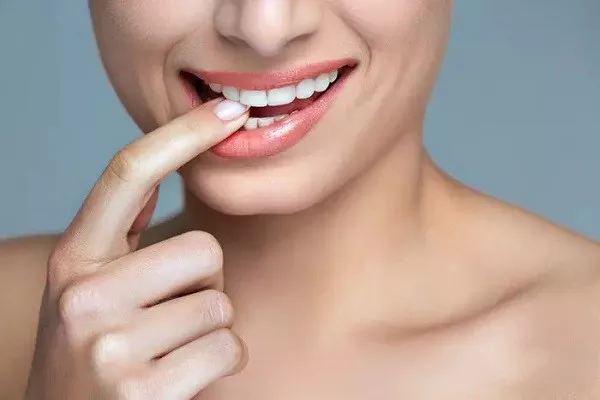White strips are one of the most popular at-home teeth whitening solutions, but they can leave your teeth feeling sensitive and uncomfortable. If you’ve recently used white strips and are experiencing sensitivity, don’t worry. There are several things you can do to soothe your teeth and alleviate discomfort. In this article, we’ll share five tips for helping sensitive teeth after using white strips.
Tip 1: Use a Desensitizing Toothpaste
Desensitizing toothpaste is designed to reduce tooth sensitivity by blocking the pathways that lead to the nerves in your teeth. Using a toothpaste specifically formulated for sensitive teeth can help calm your nerves and provide relief from discomfort. Look for brands that contain fluoride, potassium nitrate, or strontium chloride, as these ingredients have been shown to be effective in reducing sensitivity.
- Choose a toothpaste specifically formulated for sensitive teeth
- Look for brands that contain fluoride, potassium nitrate, or strontium chloride
- Brush with a soft-bristled toothbrush to minimize irritation
Tip 2: Apply a Fluoride Gel
Fluoride gel is a topical treatment that can help strengthen enamel and reduce sensitivity. You can purchase fluoride gel over-the-counter or ask your dentist for a prescription-strength version. To apply fluoride gel, simply spread a small amount on your teeth and leave it on for a few minutes before rinsing.
- Purchase fluoride gel over-the-counter or ask your dentist for a prescription
- Apply a small amount on your teeth and leave it on for a few minutes before rinsing
- Avoid eating or drinking for 30 minutes after application to allow the fluoride to absorb
Tip 3: Rinse with Salt Water
Saltwater is a natural antibacterial agent that can help soothe irritated gums and reduce inflammation. Rinsing with salt water can also help remove debris and bacteria from your teeth, which can contribute to sensitivity. To prepare a saltwater rinse, simply dissolve 1/2 teaspoon of salt in a cup of warm water and swish the solution around your mouth for 30 seconds before spitting it out.
- Dissolve 1/2 teaspoon of salt in a cup of warm water
- Swish the solution around your mouth for 30 seconds before spitting it out
- Repeat twice a day or as needed to reduce sensitivity
Tip 4: Avoid Acidic Foods and Drinks
Acidic foods and drinks, such as citrus fruits, soda, and wine, can weaken enamel and increase sensitivity. If you’ve recently used white strips, it’s important to avoid these types of foods and drinks for at least 24 hours afterward. Instead, opt for neutral or alkaline foods, such as milk, cheese, and vegetables, which can help neutralize acid and protect your teeth.
- Avoid acidic foods and drinks for at least 24 hours after using white strips
- Opt for neutral or alkaline foods, such as milk, cheese, and vegetables
- Drink plenty of water to help wash away food particles and neutralize acid
Tip 5: Give Your Teeth a Break
Using white strips too frequently or leaving them on for longer than recommended can increase sensitivity and damage your enamel. To prevent further discomfort, give your teeth a break between whitening sessions and follow the instructions carefully. Most brands recommend using white strips once a day for no more than two weeks, so be sure to stick to the recommended timeframe.
- Give your teeth a break between whitening sessions
- Follow the instructions carefully and don’t leave strips on for longer than recommended
- Use white strips once a day for no more than two weeks
Conclusion:
Using white strips can lead to tooth sensitivity, but there are several things you can do to alleviate discomfort. By using a desensitizing toothpaste, applying fluoride gel, rinsing with saltwater, avoiding acidic foods and drinks, and giving your teeth a break between whitening sessions, you can soothe your teeth and maintain a healthy, white smile. If sensitivity persists or becomes severe, be sure to consult with your dentist to rule out any underlying dental issues.
Related Topics:































